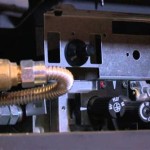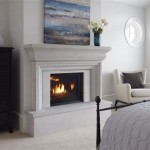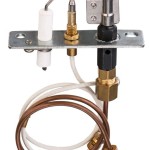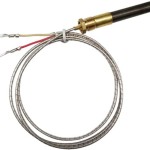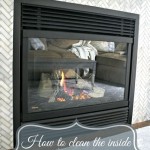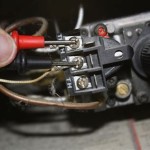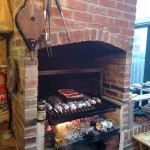Patio Fireplaces: Embracing the Warmth of Wood Burning
The allure of a crackling fire on a cool evening is undeniable. For homeowners seeking to extend their living space and create a cozy outdoor ambiance, a wood-burning patio fireplace presents a compelling option. These fireplaces offer more than just heat; they provide a focal point for gatherings, enhancing the aesthetic appeal of a patio, and evoking a sense of rustic charm.
Selecting the right wood-burning patio fireplace requires careful consideration of various factors, including budget, space constraints, aesthetic preferences, and local regulations. This article delves into the key aspects of wood-burning patio fireplaces, providing information to assist in making an informed decision.
Understanding the Benefits of Wood-Burning Patio Fireplaces
Wood-burning patio fireplaces offer a distinct set of advantages that contribute to their enduring popularity. Beyond their functional purpose of providing heat, they offer a unique atmospheric quality that other heating options struggle to replicate.
One primary benefit is the authentic ambiance. The sights, sounds, and smells of a wood-burning fire create a sensory experience that is both relaxing and comforting. The crackling of the wood, the flickering flames, and the smoky aroma all contribute to a sense of natural warmth and tranquility, fostering a welcoming environment for social gatherings or quiet contemplation.
Furthermore, wood-burning fireplaces can be a cost-effective heating solution, depending on the availability and price of firewood. In regions where firewood is readily accessible and relatively inexpensive, it can offer a more economical alternative to gas or electric heating options. However, it is crucial to factor in the time and effort involved in acquiring, storing, and preparing the firewood.
Aesthetics play a significant role in the appeal of wood-burning patio fireplaces. They often serve as architectural focal points, enhancing the visual appeal of the outdoor space. A well-designed fireplace can complement the existing landscaping and hardscaping, adding a touch of elegance and sophistication to the patio. The available range of styles, from rustic stone fireplaces to sleek modern designs, allows homeowners to select a fireplace that aligns with their personal taste and the overall aesthetic of their property.
Finally, the versatility of a wood-burning fireplace should not be overlooked. Beyond providing heat and ambiance, many models can also be used for cooking. With the addition of grilling grates or other accessories, the fireplace can be transformed into an outdoor cooking station, allowing for the preparation of delicious meals over an open flame. This adds another layer of functionality to the fireplace, making it a valuable addition to any outdoor living space.
Factors to Consider When Choosing a Wood-Burning Patio Fireplace
Selecting the appropriate wood-burning patio fireplace is a critical decision that requires careful evaluation of several key factors. Ignoring these factors can lead to dissatisfaction and potentially compromise safety and adherence to local regulations.
The available space on the patio is a fundamental consideration. Prior to purchasing a fireplace, it is essential to accurately measure the dimensions of the intended location. This will help determine the appropriate size and scale of the fireplace, ensuring that it fits comfortably within the space without obstructing walkways or encroaching on other features. A too-large fireplace can overwhelm a small patio, while a too-small fireplace may not provide adequate heat or visual impact.
Budget is another significant factor. Wood-burning patio fireplaces range in price from relatively inexpensive chimineas to elaborate custom-built structures. It is crucial to establish a realistic budget that accounts for the cost of the fireplace itself, as well as any necessary installation expenses, such as a foundation or chimney. Additionally, the ongoing cost of firewood should be factored into the overall budget.
Material selection is another important decision. Wood-burning fireplaces are typically constructed from materials such as brick, stone, concrete, or metal. Each material offers different aesthetic qualities, durability characteristics, and thermal properties. Brick and stone are classic choices that offer a traditional look and excellent heat retention. Concrete is a versatile material that can be molded into various shapes and finishes. Metal fireplaces offer a sleek, modern aesthetic and are often lighter and more portable than brick or stone options. The selection of material should be made based on both aesthetic preferences and practical considerations.
Safety is paramount when dealing with wood-burning appliances. It is imperative to select a fireplace that meets safety standards and includes features such as a spark arrestor to prevent embers from escaping. It is also critical to ensure proper ventilation to prevent the buildup of carbon monoxide. Regular maintenance, including cleaning the chimney and removing ashes, is essential for safe operation. Always consult with local building codes and fire regulations to ensure compliance with all applicable standards.
Local regulations and restrictions can significantly impact the type of wood-burning fireplace that can be installed. Many municipalities have restrictions on open burning, requiring permits or prohibiting wood-burning fireplaces altogether. It is essential to research local ordinances before making a purchase to ensure compliance with all applicable regulations. Failure to comply with local regulations can result in fines or the forced removal of the fireplace.
Types of Wood-Burning Patio Fireplaces
The market offers a diverse range of wood-burning patio fireplaces, each with its own unique characteristics and suitability for different needs and preferences. Understanding the different types available is crucial for making an informed decision.
Chimineas are a popular and relatively inexpensive option. These freestanding, bulbous fireplaces are typically made from clay or cast iron and feature a chimney that directs smoke upwards. Chimineas are relatively lightweight and portable, making them a good choice for smaller patios or for homeowners who want the flexibility to move the fireplace around. However, they typically offer less heat output than larger fireplaces and require careful attention to safety due to their open design.
Fire pits are another common choice for outdoor heating. Fire pits can be either wood-burning or gas-burning and are typically constructed from metal, stone, or concrete. Wood-burning fire pits offer a more rustic and natural feel than gas-burning models. Fire pits are generally lower to the ground than fireplaces, creating a more intimate and communal atmosphere. However, they also require careful attention to safety due to their open flames and lack of a chimney. Spark arrestors are essential for preventing flying embers.
Freestanding fireplaces offer a more substantial and permanent heating solution. These fireplaces are typically constructed from brick, stone, or concrete and feature a chimney that vents smoke upwards. Freestanding fireplaces offer greater heat output than chimineas or fire pits and can be designed to complement the architectural style of the home. However, they are also more expensive and require professional installation.
Built-in fireplaces are custom-designed and constructed fireplaces that are integrated into the patio structure. These fireplaces offer the ultimate in customization and can be designed to perfectly match the aesthetic of the outdoor space. Built-in fireplaces are typically the most expensive option and require professional design and construction. However, they offer a permanent and elegant solution for outdoor heating.
Outdoor fireplaces specifically designed as pizza ovens represent another specialized subset. These combine the warmth and ambiance of a wood-burning fire with the functionality of a traditional pizza oven, allowing for the creation of authentic, wood-fired pizzas in an outdoor setting. These ovens are typically constructed from refractory materials capable of withstanding high temperatures and often feature a domed shape for even heat distribution.
Irrespective of the type chosen, proper installation and maintenance are crucial for safe and efficient operation. Adhering to manufacturer guidelines and local building codes is essential. Regular cleaning and inspection will help ensure the longevity and safety of the wood-burning patio fireplace.

Outdoor Fireplaces Charlotte Fireplace Design Coogans Build

Outdoor Wood Burning Fireplace

Outdoor Fireplace Builder Richmond Va Dreams

42 Castlewood Outdoor Wood Burning Fireplace Fine S Gas

Outdoor Fireplace Kits Stonewood S Cape Cod Ma Nh Ct

Outdoor Wood Fireplaces Jetmaster

Gas Logs Vs Wood Burning Outdoor Fireplaces Green Okie

30 Outdoor Fireplace Ideas Cozy Fireplaces

Wood Burning Outdoor Fireplace Landscaping Network

Suoy Curtis 56 69 In Wood Burning Outdoor Fireplace With Broe Highlights 169476 The Home Depot

